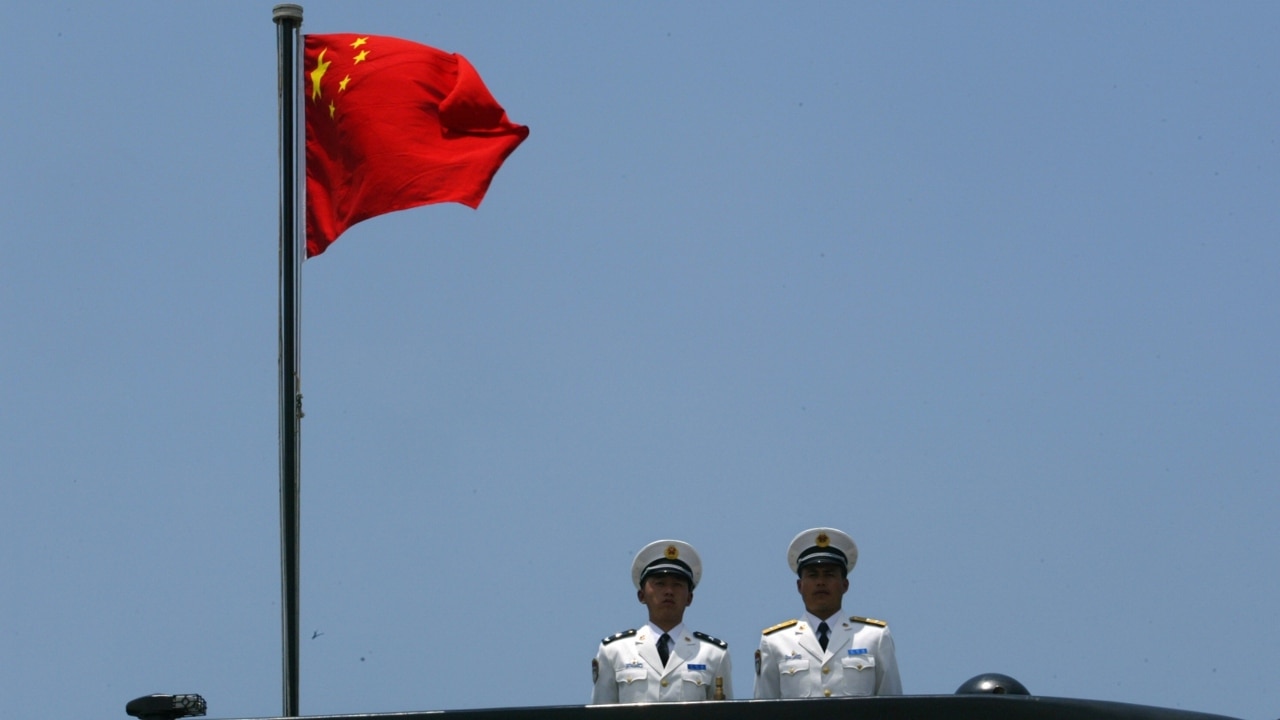Chinese submarine disaster mystery deepens
The murky world of covert submarines has again been highlighted with reports of 55 sailor deaths. But not all may be as it seems.

The murky world of covert submarine operations has again been highlighted with unsubstantiated reports of 55 deaths of a Chinese crew. But not all may be as it seems.
Rumours began circulating on August 21 after anti-Chinese Communist Party activist social media account “Lude Media” posted a claim that Chairman Xi Jinping had received a briefing that all officers, crew and students undergoing training aboard a Type 093 (Shang class) nuclear-powered attack submarine had died “while performing a mission in the Taiwan Strait”.
After Taiwan’s defence ministry rejected reports of an accident off its shores, “Lude Media” and its affiliated English-speaking “Dr Li-Meng YAN” account amended the location to a specific set of coordinates in the Yellow Sea between the Chinese province of Jiangsu and South Korea. It went on to name the vessel’s captain and claim it was using a new secret pump-jet propulsion system.
ç›´æ’公告:
— 路德社lude media (@lude_media) August 21, 2023
ã€è·¯å¾·æ—¶è¯„/ä¸å…±æƒ…咨】ç»å¯†æƒ…报:6å°æ—¶å‰ä¸å…±ä¸€è‰˜09IIIåž‹æ”»å‡»åž‹æ ¸åŠ¨åŠ›æ½œè‰‡ï¼Œåœ¨æ‰§è¡Œå°æµ·ä»»åŠ¡æ—¶å‡ºäº‹ï¼Œæ½œè‰‡å†›å®˜å…¨éƒ¨æ»äº¡ï¼Œä¹ è¿‘å¹³æ£åœ¨å†›å§”è”åˆä½œæˆ˜æŒ‡æŒ¥ä¸å¿ƒäº†è§£æ¤äº‹ï¼›8/21/2023ã€è·¯å¾·/墨åšå£«ã€‘https://t.co/LvDZjrd0Lw
No corroborating evidence has yet been found by open-source intelligence (OSINT) enthusiasts or military analysts.
But the rumour surged back into the spotlight this week after the UK’s Daily Mail published extracts of what it says is a leaked British intelligence report.
The report repeats details initially posted by “Lude Media” over the past two months.
“Incident happened at 08.12 local resulting in the death of 55 crew members: 22 officers, 7 officer cadets, 9 petty officers, 17 sailors,” the Daily Mail extract reads. “Dead include the captain Colonel Xue Yong-Peng. Our understanding is death caused by hypoxia due to a system fault on the submarine. The submarine hit a chain and anchor obstacle used by the Chinese Navy to trap US and allied submarines. This resulted in systems failures that took six hours to repair and surface the vessel. The on-board oxygen system poisoned the crew after a catastrophic failure.”
Regarding the rumor about the Chinese submarine's accident in Yellow Sea, Lude Media - the original source - provided the coordinates: 35.6493°N/121.3260°E. This prompted me to examine sat image from Aug 21 for unusual signs. Just take a look and not jump to conclusions! pic.twitter.com/Cpn6TFuR7Q
— Duan Dang (@duandang) August 28, 2023
But international military analysts remain sceptical about the story, pointing to inconsistencies in the reported events.
Center for a New American Security (CNAS) fellow Tom Shugart, himself a former US submarine commander, also expressed doubts.
“1. Submarine nets have a long tradition in defensive ASW (anti-submarine warfare), but I haven’t heard of any in modern use like this, in open ocean.
2. I don’t understand how snaring a net could cause a problem w (ith) atmosphere control. As for batteries “going flat”, it’s a nuclear boat so that’s odd.”
1. Submarine nets have a long tradition in defensive ASW, but I haven’t heard of any in modern use like this, in open ocean.
— Tom Shugart (@tshugart3) October 3, 2023
2. I don’t understand how snaring a net could cause a problem w. atmosphere control. As for batteries “going flatâ€, it’s a nuclear boat so that’s odd 🤷â€â™‚ï¸.
Covert operations
The primary sources of the submarine disaster claims are affiliated with the America Out Loud Podcast Network, “a premier source for the uncensored conservative viewpoint” which focuses on topics such as “wokeism”, anti-LGBTQI rights, “deep state” government and vaccine-related conspiracy theories.
The Voice of Dr. Yan host, Li-Meng Yan, claims one submariner survived the incident. “He is secretly confined for violating the rules of the investigation. Even President Xi didn’t know the alive one until August 30”.
The account has since gone on to claim such an anchor-and-chain trap was behind the extensive damage done to the US Seawolf attack submarine USS Connecticut in 2021. And that the Chinese territorial marker buoys recently removed by the Philippines from Scarborough Shoal were part of this deadly network.
According to our sources in CCP’s Central Military Commission, Xi Jinping has demanded CCP-PLA to suppress our revelations on the PLAN 093-417 submarine accident in Yellow Sea on 21 Aug.
— Dr. Li-Meng YAN (@DrLiMengYAN1) August 24, 2023
Now we publish the name of the commander of 093-417, who is dead in the accident: Colonel XUE… https://t.co/hGshGPTzmtpic.twitter.com/NvJCS5ADiQ
The US Navy, however, says the USS Connecticut had its bow stove-in when it slammed into an underwater seamount while travelling at high speed in the South China Sea. And the Philippines Coast Guard says it was quickly able to cut away the line of buoys laid as a visual marker on its territory.
While the story of a nuclear submarine becoming fatally tangled in an anchor-and-chain net trap is possible, analysts say early accounts of the alleged incident were not entirely plausible.
Defence analyst and undersea warfare expert H.I. Sutton was among the first to pick up on the story.
“Two obvious question marks are 1) Nuclear subs don’t normally run out of air for months, they can make it 2) Nuclear boats have a lot of power, anchor chain shouldn’t be fatal,” he writes on his blog, Covert Shores.
“I’d have thought a key marker would be some unusual activity from their submarine support/rescue ships,” adds naval historian and analyst Dr Phil Weir. “The North Sea Fleet has at least four, and PLAN has at least three DSRVs (Deep Sea Rescue Vehicles), including an LR-7 they bought from Britain.”
Silent service
Submarines have a long history of engaging in secret espionage and surveillance operations.
But the seas are becoming increasingly crowded. And transparent.
“We need to think about operating differently down there to sustain the undersea advantage that the US has relied upon for the last 20 to 30 years as our sort of ace in the hole when it comes to deterring adversaries like Russia and China,” argues Hudson analyst Bryan Clark.
Strategically significant locations, such as the South and East China Seas and the Yellow Sea, have become the focus of significant Chinese anti-submarine efforts.
Reports claiming that a Chinese Type 09III nuclear-powered submarine had an accident in the Taiwan Straits are completely false: Chinese Defense Ministry pic.twitter.com/QIhOEBJOEr
— Global Times (@globaltimesnews) August 31, 2023
A recent US think-tank conference, titled Fighting into the Bastions, urges a corresponding adjustment of submarine technology, operations and tactics.
“Adversaries have instrumented these bastions with networks of fixed and mobile acoustic and non-acoustic sensors, complemented by aircraft and ships capable of pouncing on contacts or deploying dense mine barriers,” the report warns. “Improved adversary defences could degrade or defeat US undersea operations, preventing US submarines from conducting critical missions such as sinking a Chinese invasion fleet or tracking Russian ballistic missile submarines (SSBNs).”
This has significant implications for its next generation of attack submarines (SSNX).
And this is likely to impact Australia’s options when it comes to designing and building a new nuclear-powered attack boat with the UK (SSN AUKUS)
The report emphasises the need for crewed submarines to become drone carriers to extend their reach into heavily defended areas, magnify their firepower and reduce risk to life.
“Uncrewed vehicles can also enable US undersea forces to exploit active sonar to detect and track increasingly quiet submarines without risking counter-detection of a crewed US ship,” the report reads.






